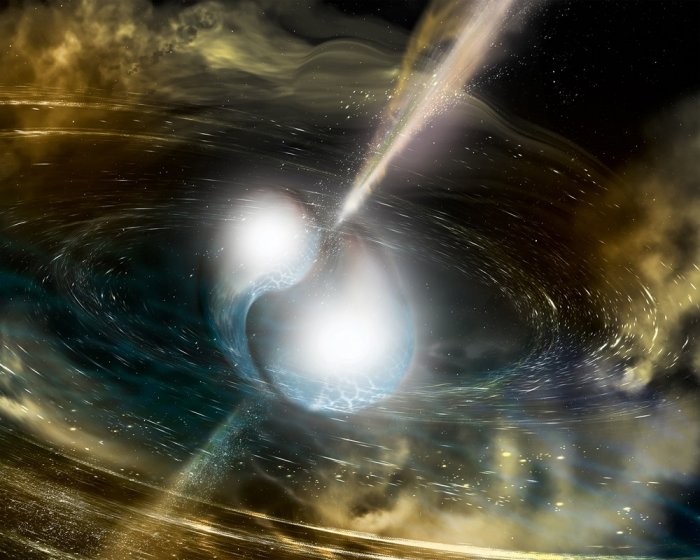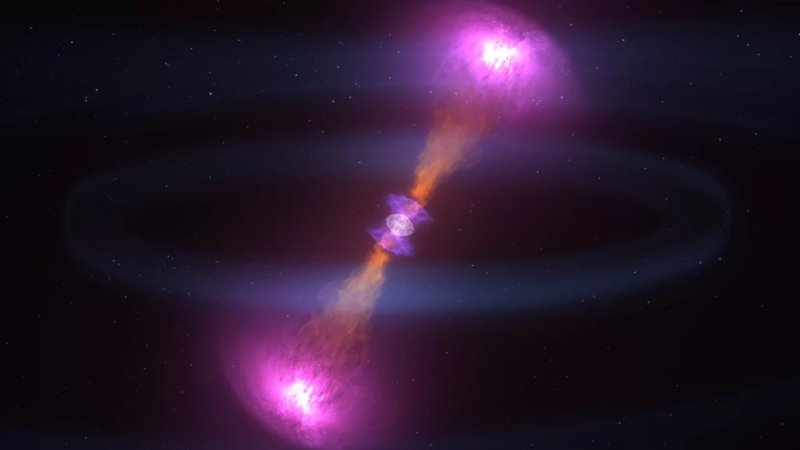Gravity Travels At The Speed Of Light – Confirmed For The First Time Ever
MessageToEagle.com – For the first time ever, scientists can confirm that gravity travels at the speed of light. It’s a great and long-awaited moment for astronomers and physicists.
Light obeys a speed limit that is roughly 186,000 miles per second. According to Einstein’s special relativity nothing can travel faster than the speed of light.
Two neutron stars collide; the resulting gravitational wave spread at the speed of light. (Credit: National Science Foundation/LIGO/Sonoma State University/A. Simonne)
Traveling faster than light is often a popular science fiction subject because if you break the speed of light, you would be traveling back in time.
If you travel close to the speed of light, you experience a phenomenon known as time dilation.
Time dilation is a physics concept that is based on the idea that as you move through space, time itself is measured differently for the moving object than the unmoving object.
As MessageToEagle.com reported in October dead cores of two stars collided 130 million years ago in a distant galaxy and scientists could for the first time ever observed gravitational waves and light waves from the same event.
This observation opened a new fascinating chapter in science and it was also first ever direct confirmation that gravity travels at the speed of light.
This artist’s illustration shows two neutron stars (bright blue dots in the middle of the image) merging together and creating jets of matter and light. The event was first seen by gravitational wave observatories, and was later studied by light-based observatories. Credit: NASA’s Goddard Space Flight Center/CI Lab
Einstein’s theory is based on the fact that time is relative and changes with speed and in the presence of gravity. This means that any kind of information kind has a finite speed. It doesn’t matter whether it is a photon — the light-carrying particle — or a graviton, which carries the force of gravity.
“In relativity, there is a ‘speed of information’ — the maximum speed that you can send information from one point to another,” says University of Wisconsin-Milwaukee physicist Jolien Creighton, an expert on general relativity and member of the LIGO team that first spotted gravitational waves.
See also:
Forbush Decrease: Dangerous Event That Can Affect Human Health, Technology, Earth’s Environment
Great Attractor: Mysterious Gravitational Anomaly Beyond Hydra-Centaurus Supercluster
Is There Anything In The Universe Bigger Than A Galaxy?
Creighton explains that in electromagnetism, when you shake an electron, it creates a change in the electric field that spreads out at the speed of light. Gravity works the same way. Shake a mass and the change in the gravitational field — the gravitational wave — propagates at that same speed.
“So, the fact that the speed of gravitational waves is equal to the speed of electromagnetic waves is simply because they both travel at the speed of information,” Creighton says.
One way of picturing this is to pretend the Sun vanished right now. If this happened, our planet wouldn’t drift into space eight away. It would take eight minutes before Earth would go dark and simultaneously push off in a straight line.
Earth wouldn’t just drift into space instantly. After eight minutes, Earth would go dark and simultaneously push off in a straight line.
MessageToEagle.com
Expand for referencesRelated Posts
-
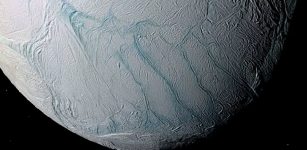 Enceladus – Mysterious Water World In Our Solar System
No Comments | Nov 30, 2015
Enceladus – Mysterious Water World In Our Solar System
No Comments | Nov 30, 2015 -
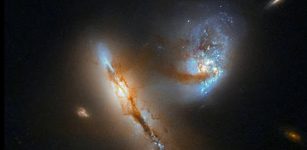 Hubble Presents UGC 2369: Strange, Luminescent Pair Of Galaxies Full Of Stars
No Comments | Aug 15, 2019
Hubble Presents UGC 2369: Strange, Luminescent Pair Of Galaxies Full Of Stars
No Comments | Aug 15, 2019 -
 ‘Intra-Group Light’ – Elusive Glow Between Distant Galaxies – Observed
No Comments | Nov 28, 2022
‘Intra-Group Light’ – Elusive Glow Between Distant Galaxies – Observed
No Comments | Nov 28, 2022 -
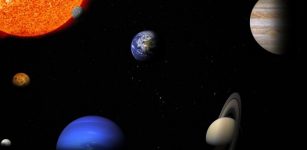 New Experiment Gives Insight Into The Chaotic Behavior Of Flows In Planets
No Comments | Apr 23, 2022
New Experiment Gives Insight Into The Chaotic Behavior Of Flows In Planets
No Comments | Apr 23, 2022 -
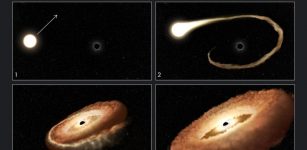 Hubble Finds Hungry Black Hole Twisting Captured Star Into Donut Shape
No Comments | Jan 19, 2023
Hubble Finds Hungry Black Hole Twisting Captured Star Into Donut Shape
No Comments | Jan 19, 2023 -
 Black Hole Discovered Firing Jet At Neighbouring Galaxy
No Comments | Oct 13, 2022
Black Hole Discovered Firing Jet At Neighbouring Galaxy
No Comments | Oct 13, 2022 -
 Strange Magnetic Forces Around Lonar Lake – What’s Behind The Electromagnetic Anomaly?
No Comments | Dec 7, 2017
Strange Magnetic Forces Around Lonar Lake – What’s Behind The Electromagnetic Anomaly?
No Comments | Dec 7, 2017 -
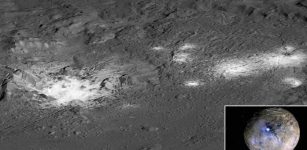 Different Bright Areas On Ceres Suggest Geologic Activity
No Comments | Dec 14, 2017
Different Bright Areas On Ceres Suggest Geologic Activity
No Comments | Dec 14, 2017 -
 ‘Little Lion’ Galaxy Could Shed Light On Big Bang, New Study
No Comments | May 16, 2016
‘Little Lion’ Galaxy Could Shed Light On Big Bang, New Study
No Comments | May 16, 2016 -
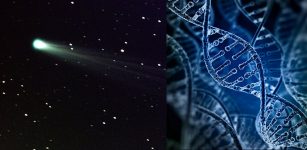 Can Interstellar Ice Solve The Mystery Of DNA?
No Comments | Sep 26, 2017
Can Interstellar Ice Solve The Mystery Of DNA?
No Comments | Sep 26, 2017

